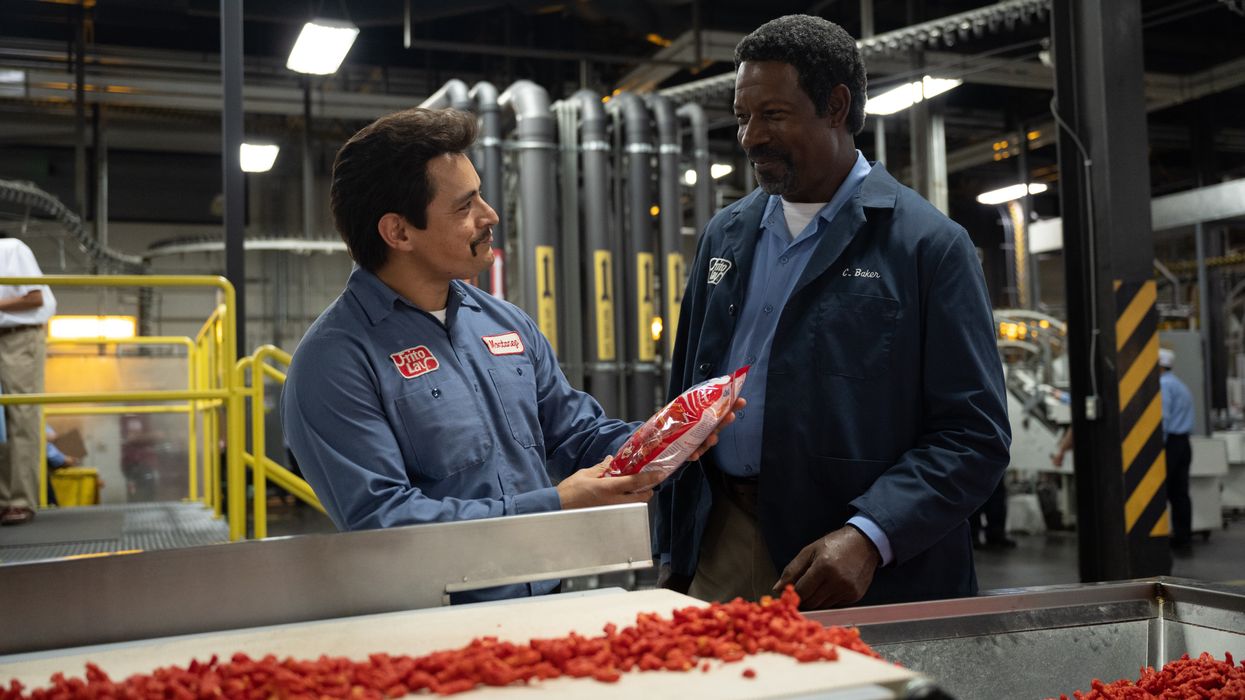Costume Designer Elaine Montalvo Expands the Worlds of 'Flamin' Hot' and 'Blindspotting' Season 2
How does a costume designer add to the story and character with clothing?

This post is written by Elaine Montalvo.
My costume designs for Flamin’ Hotexplore an authentic aesthetic that both honors Mexican American culture and tells the story of Richard Montañez, a janitor who rose up the ranks of a Frito Lay Factory in Southern California. I chose to depict real people in a real way without stereotyping.
My first creative meeting was a conversation with Eva Longoria, where it was immediately clear that her vision for the movie was powerful. I knew that we were about to create a special film. Then, I met with Richard and Judy Montañez in their home.
For a biopic film such as Flamin’ Hot, the best inspiration is from real reference photographs and accounts of what people actually wore in their everyday lives. Richard and Judy shared family photographs with me and described the clothing and various roles of employees at the factory to me. I have some cultural similarities with the main character, which allowed me to give additional insight into the authenticity of the character portrayals.
There are challenges when depicting real people and heritage. One way to overcome the risk of repeating unwelcome clichés is to find the truth and context in a story before making a design decision.
Eva and I carefully reviewed the research. Sometimes a fact, in reality, is represented somewhat differently in the motivation to emphasize a dramatic point. For example, factory workers in real life got dressed in their uniforms in a locker room at work.
However, in our movie, Richard wears his uniform at home, since we wanted to show the emotional connection between him and his wife, Judy, as he proudly prepares for work in the presence of his family. Though at the bottom of the factory rank, Richard wore his uniform as his badge of honor. It represented his first legitimate job, a major accomplishment in his young family’s life. We knew we needed to express the dignity of Richard earning this achievement.
My Work on Blindspotting
In Season 2 of Blindspotting, the show explores many aspects of life in Oakland, California. One particular theme covers the hardships placed on a family during a member’s incarceration and the challenges faced when attempting to resume life once released from prison. The show includes multi-cultural and deep socio-economic topics, so I needed to represent the tapestry of diverse styles of the Bay Area.
My approach to the costume design of the series was to stay committed to giving each character a distinct identity style while portraying a convincing community.
Though the series is set in Oakland, we filmed mostly in Los Angeles and partly in Oakland and Santa Cruz. Thus, I brought Oakland to LA by seeking out vendors and designers from the Bay Area and putting those looks on screen.
The community was already very familiar with season one of Blindspotting and loved the show, so support was readily available. In the fitting room, we were able to infuse various styles and brands seamlessly into the outfits. We do not exaggerate what people wear in Oakland, but we are artistically and culturally representative.
In one particular episode, we visit the Old West. It was creatively exciting to interpret each character through the lens of the 1800s. The cast was very eager to transform into another century.
During my research into the California Gold Rush era (1848–1855), I came across a portrait of a young man who wore an incredible shirt that displayed a repeated pattern of a pickaxe and a shovel, representing a certain prosperous fashion of that moment in history long ago.
As soon as I shared my research with show creators Rafael Casal and Daveed Diggs, they knew we had to see that fabric in our show. I immediately began custom-designing an original fabric. We knew who was right to wear this creation. Earl, played by Benjamin Earl Turner, has a particularly bold style in the contemporary storyline, so it was very appropriate that he would be fashionable in the West as well.
I enjoyed seeing these urban characters become a rustic, dusty version of themselves.
This post is written by Elaine Montalvo.













